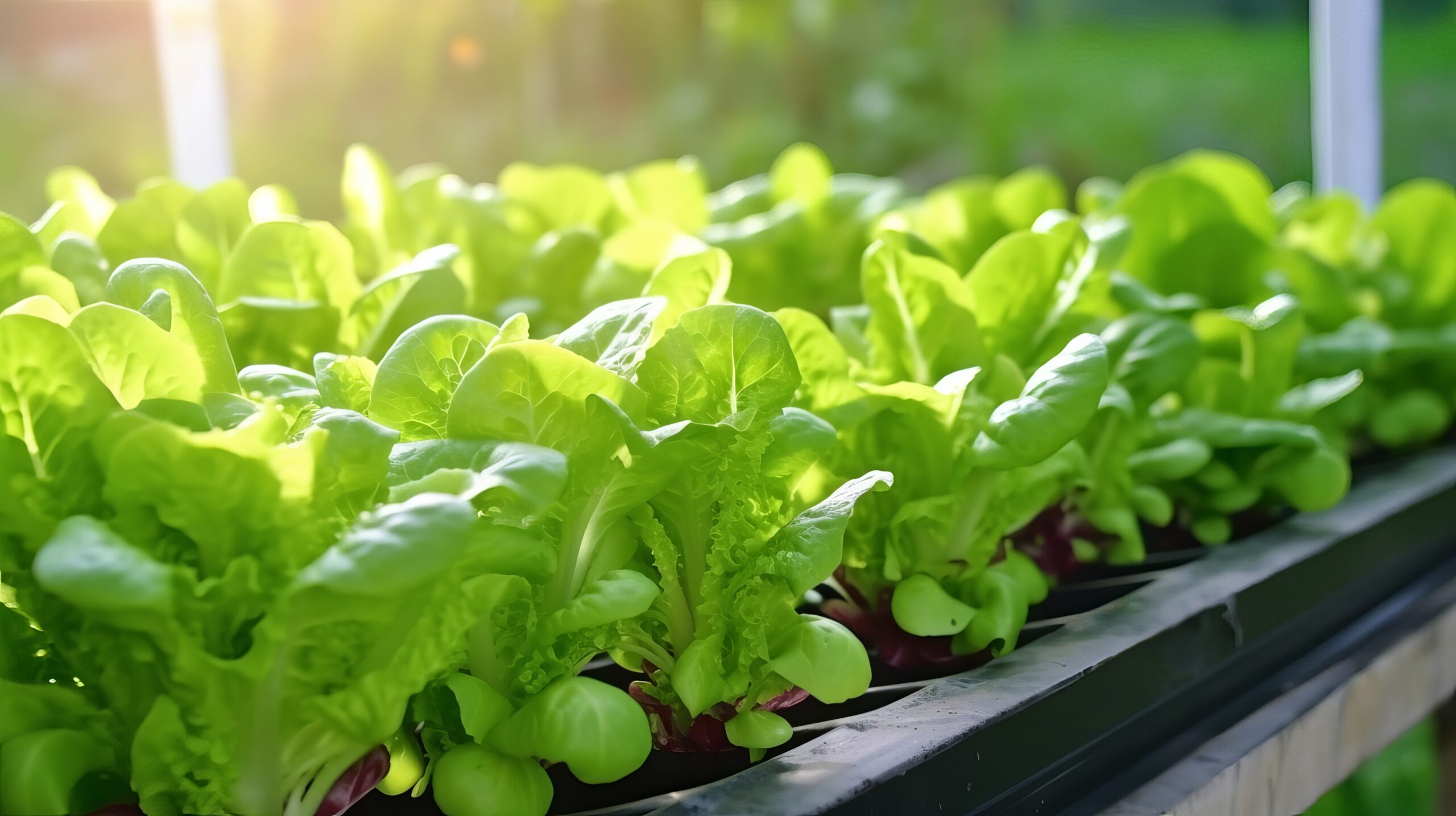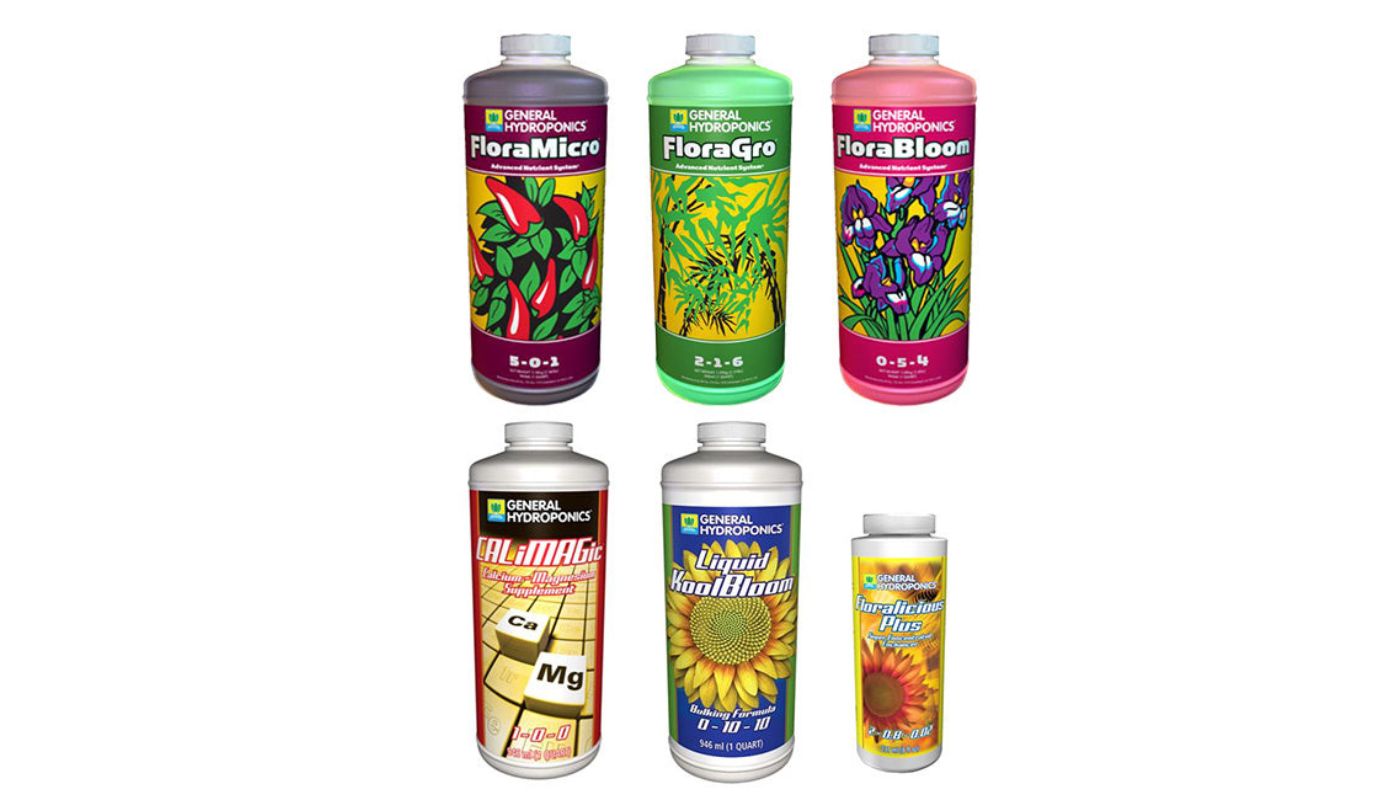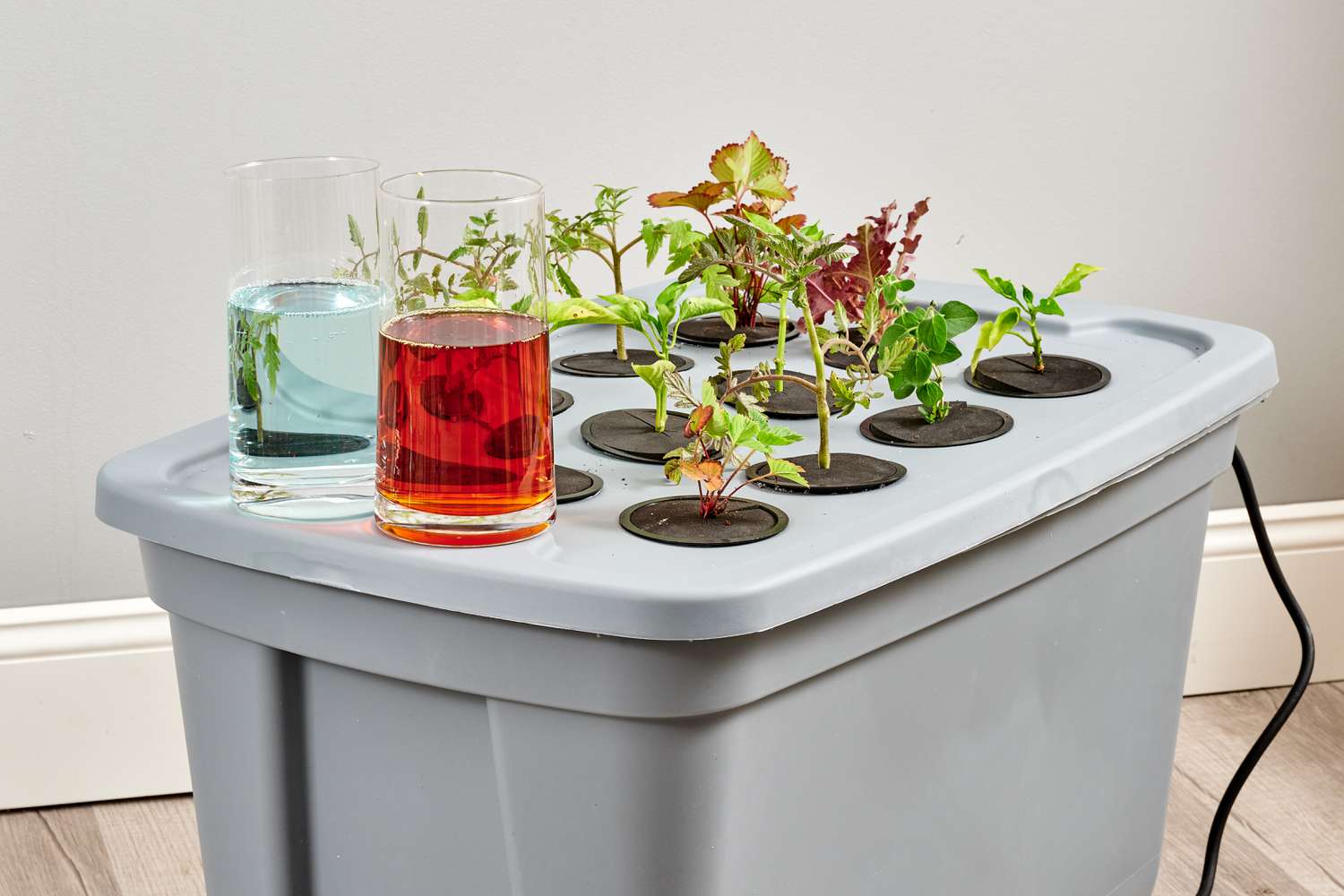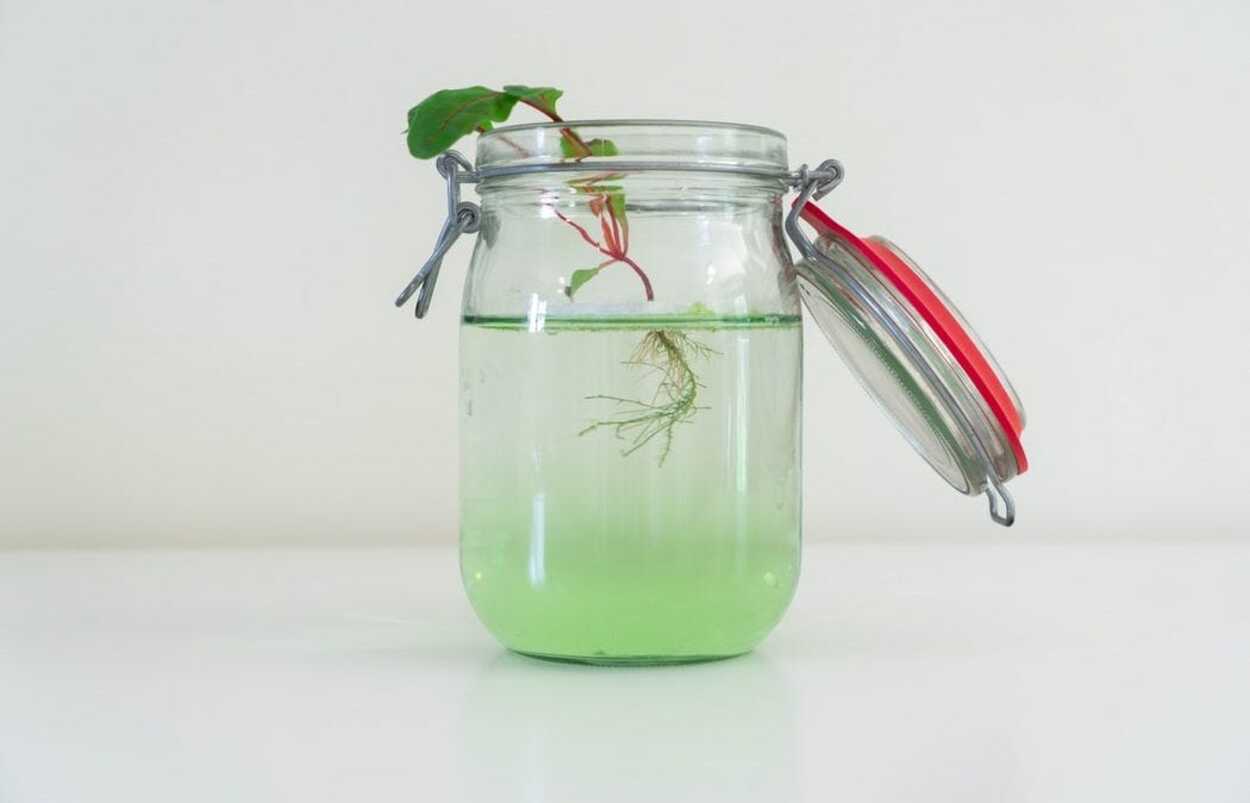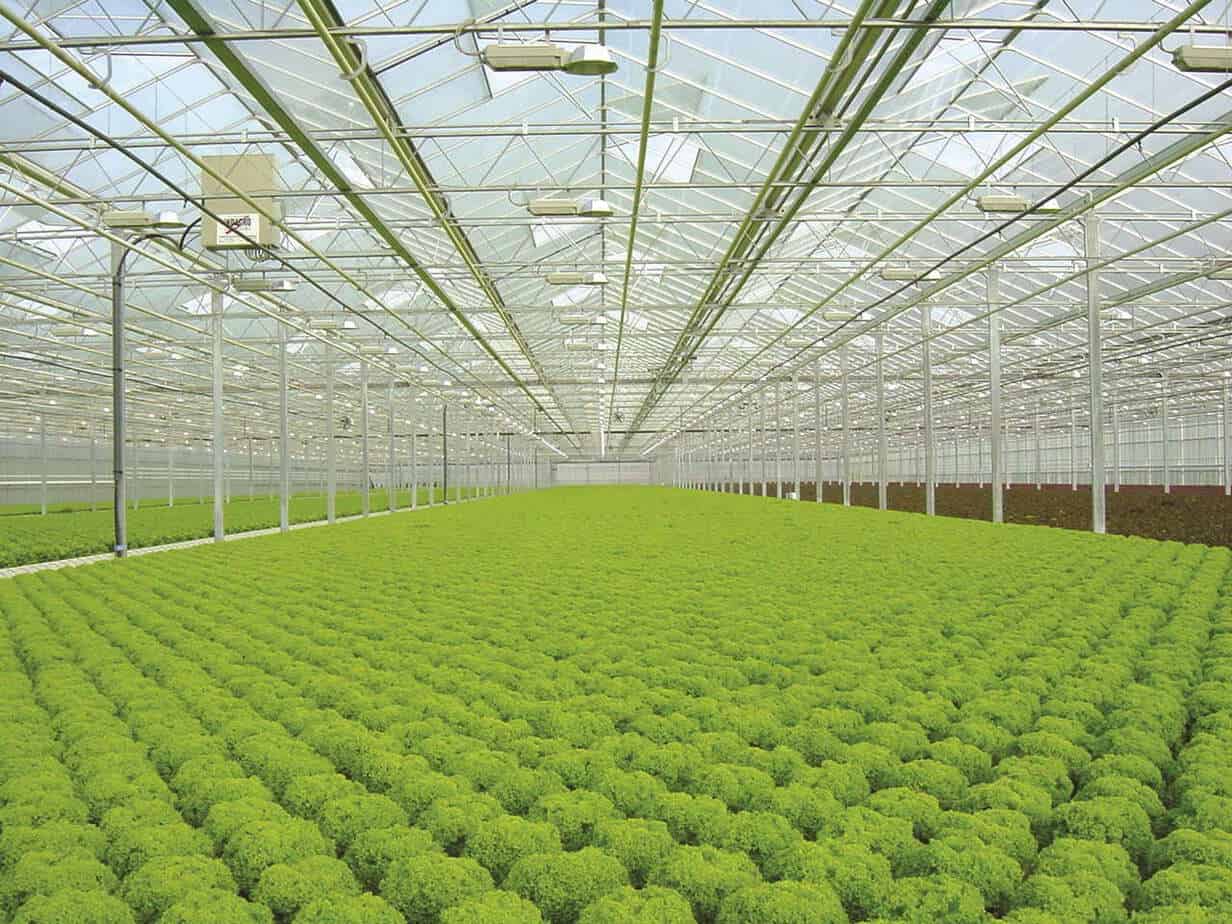Home>Gardening Tips and Tricks>Eco-Friendly Gardening>What Are The Best Nutrients For Hydroponics
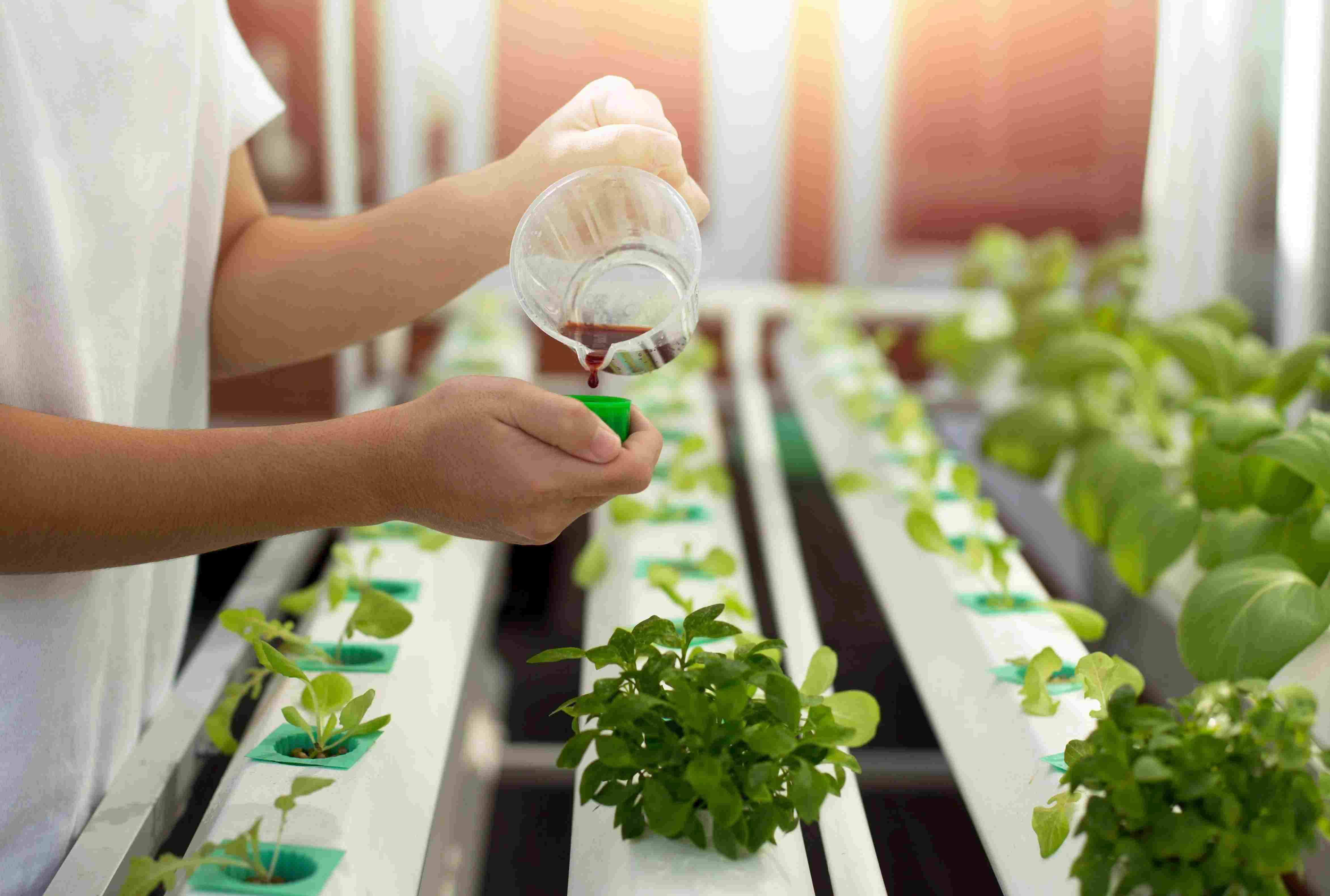

Eco-Friendly Gardening
What Are The Best Nutrients For Hydroponics
Modified: January 22, 2024
Discover the top eco-friendly gardening tips for hydroponics and learn about the best nutrients to use for maximum plant growth.
(Many of the links in this article redirect to a specific reviewed product. Your purchase of these products through affiliate links helps to generate commission for Chicagolandgardening.com, at no extra cost. Learn more)
Table of Contents
Introduction
Welcome to the world of eco-friendly gardening with hydroponics! In this modern and innovative approach to gardening, plants are grown without soil, using nutrient-rich water as their primary source of sustenance. Hydroponics not only offers a more sustainable and efficient way of growing plants, but it also allows you to cultivate a wide variety of crops in small spaces, all while minimizing the use of harmful chemicals and pesticides. Whether you have limited outdoor space or simply want to explore a new and environmentally conscious gardening technique, hydroponics is a fantastic solution.
With hydroponics, plants are placed in a controlled environment where they receive the exact amount of nutrients they need at every stage of their growth. By directly supplying plants with water-soluble nutrients, we eliminate the need for nutrient extraction from the soil, ensuring optimal plant growth and health. This method also allows for faster growth rates and higher crop yields compared to traditional soil-based gardening. Additionally, hydroponics reduces water consumption as it recirculates the water used in the system, making it an ideal choice for water-scarce regions.
One of the key advantages of hydroponics is its adaptability to any environment. Whether you have a sunny rooftop, a small balcony, or even an indoor space with artificial lighting, hydroponics can thrive in various conditions. By controlling the environment, including temperature, humidity, and light levels, you can create the perfect growing conditions for your plants, regardless of the external climate.
In this comprehensive guide, we will explore the essential nutrients needed for hydroponics, the importance of maintaining proper pH levels, common nutrient deficiencies, and how to correct them. By understanding these crucial aspects, you will be well-equipped to embark on your eco-friendly gardening journey with hydroponics.
Benefits of Hydroponics
Hydroponics offers numerous advantages over traditional soil-based gardening methods. Let’s delve into some of the key benefits:
- Water Efficiency: One of the major advantages of hydroponics is its water efficiency. Unlike traditional gardening, where a significant amount of water is lost through evaporation and runoff, hydroponics recirculates the water used in the system, significantly reducing water consumption. This makes it an excellent choice for regions facing water scarcity or for gardeners looking to conserve water.
- Space Utilization: Hydroponics allows for efficient use of space, making it suitable for urban dwellers or those with limited gardening areas. By eliminating the need for soil, plants can be grown vertically, maximizing the use of available space. This makes hydroponics ideal for small balconies, rooftops, or even indoor settings.
- Year-round Gardening: With hydroponics, you can grow plants indoors or in a controlled environment, allowing you to garden all year round. This is particularly advantageous for climates with extreme temperatures or limited growing seasons. By providing optimal conditions for plant growth, hydroponics ensures a continuous supply of fresh produce regardless of the external weather conditions.
- Increased Crop Yield: Hydroponics promotes faster and healthier plant growth, resulting in higher crop yields compared to traditional gardening methods. By providing the perfect balance of nutrients, water, and light, plants can grow more efficiently and produce larger yields. This makes hydroponics a preferred choice for commercial growers who want to maximize their productivity and profits.
- Pest and Disease Control: In a hydroponic system, the absence of soil significantly reduces the risk of pests and soil-borne diseases. This minimizes the need for chemical pesticides and fungicides, making hydroponics a more eco-friendly and sustainable gardening option. Additionally, the controlled environment makes it easier to monitor and control potential pest or disease outbreaks, ensuring healthier plants.
- Reduced Weeding and Maintenance: Since hydroponics eliminates the use of soil, there is no need for regular weeding. This saves time and effort, allowing gardeners to focus on other aspects of plant care, such as nutrient monitoring and system maintenance. With proper setup and maintenance, hydroponic systems can be relatively low-maintenance compared to traditional gardens.
These are just a few of the many benefits that hydroponics offers. Whether you are a novice gardener or a seasoned horticulturalist, incorporating hydroponics into your gardening practices can revolutionize the way you grow plants, providing sustainable, efficient, and rewarding results.
Essential Nutrients for Hydroponics
In order for plants to thrive in a hydroponic system, it is crucial to provide them with the essential nutrients they need for proper growth and development. These nutrients can be divided into two categories: macronutrients and micronutrients.
Macronutrients
Macronutrients are the primary nutrients required by plants in larger quantities. They include:
- Nitrogen (N): Nitrogen is essential for healthy leaf and stem growth. It aids in the production of chlorophyll and proteins, which are vital for photosynthesis and overall plant development.
- Phosphorus (P): Phosphorus is crucial for root development, energy transfer, and flower and fruit production. It plays a key role in DNA, RNA, and ATP synthesis, all of which are essential for plant growth and reproduction.
- Potassium (K): Potassium is necessary for overall plant health and helps regulate various physiological processes. It aids in water and nutrient uptake, strengthens cell walls, and enhances disease resistance.
- Calcium (Ca): Calcium is essential for proper cell division and growth. It strengthens cell walls, improves nutrient absorption, and helps prevent diseases caused by calcium deficiencies.
- Magnesium (Mg): Magnesium is a vital component of chlorophyll, the pigment responsible for capturing energy from sunlight. It is necessary for photosynthesis, enzyme activation, and nutrient metabolism.
- Sulfur (S): Sulfur plays a key role in plant nutrition by aiding in the synthesis of proteins, enzymes, vitamins, and chlorophyll. It is necessary for proper growth and development.
Micronutrients
Micronutrients, also known as trace elements, are required in smaller quantities but are just as important for plant growth and development. They include:
- Iron (Fe)
- Manganese (Mn)
- Zinc (Zn)
- Copper (Cu)
- Molybdenum (Mo)
- Boron (B)
These micronutrients are essential for various enzymatic processes, hormone production, and overall plant health. They are typically added in small amounts to hydroponic nutrient solutions to ensure optimal plant growth.
In addition to these essential nutrients, it is important to maintain the proper pH levels in your hydroponic system. The pH level affects nutrient uptake by plants. Most plants prefer a slightly acidic pH level between 5.5 and 6.5. Regular monitoring and adjustment of pH levels are essential to ensure that the nutrients are readily available to the plants.
By providing the necessary macronutrients, micronutrients, and maintaining proper pH levels, you will create an ideal environment for your hydroponic plants to thrive and achieve optimal growth and productivity.
Macronutrients
Macronutrients are the primary nutrients that plants require in larger quantities for their growth and development in hydroponic systems. Understanding the role of each macronutrient can help you provide the ideal conditions for your plants to flourish. Let’s explore the essential macronutrients:
Nitrogen (N)
Nitrogen is a crucial macronutrient that plays a key role in plant growth. It is responsible for the development of lush green foliage, as it is an essential component of chlorophyll. Chlorophyll is involved in the process of photosynthesis, which enables plants to convert sunlight into energy. Adequate nitrogen levels stimulate vegetative growth, support the production of enzymes and proteins, and enhance overall plant vigor.
Phosphorus (P)
Phosphorus is essential for various metabolic processes in plants. It is primarily involved in energy transfer, as it plays a vital role in ATP (adenosine triphosphate) synthesis. ATP is the energy currency of cells and is required for numerous plant functions. Phosphorus also promotes root development, improves flower and fruit production, and contributes to overall plant health and vigor.
Potassium (K)
Potassium is a versatile macronutrient that influences several physiological processes in plants. It regulates water uptake and transportation within the plant, improves overall water efficiency, and helps plants withstand drought conditions. Potassium also plays a crucial role in enzyme activation, promoting healthy growth, and enhancing disease resistance. Additionally, it improves the quality and shelf life of harvested produce.
Calcium (Ca)
Calcium is essential for plant cell wall structure and strength. It aids in proper cell division and growth, promoting healthy root development and enhancing the plant’s ability to absorb other nutrients. Calcium also contributes to the overall health and longevity of plants, playing a role in disease prevention and stress tolerance.
Magnesium (Mg)
Magnesium is a vital component of chlorophyll, which is responsible for capturing sunlight and facilitating photosynthesis. It is involved in numerous enzymatic reactions, including the synthesis of carbohydrates and proteins. Magnesium also aids in nutrient uptake and utilization, enhances root development, and promotes overall plant growth and quality.
Sulfur (S)
Sulfur is an essential component of many amino acids, proteins, enzymes, and vitamins. It plays a crucial role in protein synthesis, chlorophyll formation, and the overall metabolism of plants. Sulfur is necessary for plant growth and development, affecting plant vigor, disease resistance, and nutrient uptake.
When providing macronutrients to your hydroponic plants, it is essential to ensure the correct balance and concentration. Monitoring and adjusting nutrient levels according to plant requirements at different growth stages will help maintain optimum health and maximize their potential.
Micronutrients
In addition to macronutrients, plants also require micronutrients, also known as trace elements, in smaller quantities for optimal growth and development in hydroponic systems. Although they are only needed in small amounts, these micronutrients play crucial roles in various plant functions. Let’s explore the essential micronutrients:
Iron (Fe)
Iron is vital for chlorophyll synthesis and is a key component of numerous enzymes involved in energy transfer and metabolic processes within plants. It plays a crucial role in photosynthesis, aiding in the conversion of sunlight into chemical energy. Iron deficiency can result in chlorosis, causing yellowing of leaves and reduced plant growth.
Manganese (Mn)
Manganese is involved in various enzyme reactions and plays a significant role in photosynthesis, respiration, and nitrogen metabolism. It is essential for chlorophyll production, promoting healthy leaf growth and ensuring efficient energy conversion. Manganese deficiency often leads to yellowing between the veins of leaves and poor plant growth.
Zinc (Zn)
Zinc is necessary for protein synthesis and is involved in numerous enzymatic processes within plants. It plays a crucial role in hormone regulation, promoting proper growth and development. Zinc deficiency can result in stunted growth, distorted leaves, and reduced flower and fruit production.
Copper (Cu)
Copper is essential for several enzymatic reactions involved in plant metabolism and the synthesis of important compounds. It facilitates the utilization of iron, aids in the formation of lignin, and contributes to antioxidant defense systems within plants. Copper deficiency may lead to leaf discoloration and reduced plant growth.
Molybdenum (Mo)
Molybdenum is necessary for nitrogen fixation and is an essential part of various enzymes involved in nitrogen metabolism. It helps in the conversion of nitrogen into forms that plants can utilize. Molybdenum deficiency can lead to reduced growth, chlorotic leaves, and impaired nitrogen metabolism.
Boron (B)
Boron is involved in various physiological processes, including cell wall development, ion transport, and carbohydrate metabolism. It plays a vital role in the formation and structure of new plant tissues. Boron deficiency can result in stunted growth, brittle leaves, and reduced flower and fruit development.
These micronutrients are essential for maintaining optimal plant health and ensuring proper growth and development. While they are required in smaller amounts, their absence or imbalance can have significant impacts on plant growth and productivity. It is crucial to provide a carefully balanced nutrient solution that includes these micronutrients to meet the specific needs of your hydroponic plants.
Importance of pH Levels in Hydroponics
The pH level of the nutrient solution used in hydroponics plays a vital role in the overall health and success of your plants. pH refers to the acidity or alkalinity of a solution and is measured on a scale from 0 to 14, with 7 being considered neutral. Understanding the importance of maintaining proper pH levels is crucial for optimal plant growth in hydroponic systems.
One of the primary reasons pH is important is because it affects nutrient availability to plants. Different nutrients are absorbed by plant roots at different pH levels. In hydroponics, the nutrient solution is the sole source of nutrients for the plants, so it is crucial to provide an environment where nutrients are readily available for uptake.
Most plants prefer a slightly acidic pH level between 5.5 and 6.5. At this pH range, nutrients such as nitrogen, phosphorus, and potassium are more soluble and readily available for uptake. In contrast, at higher or lower pH levels, certain nutrients can become less soluble and less accessible to the plants, leading to nutrient deficiencies or toxicities.
A disparity in pH levels can also affect the overall health of beneficial microorganisms in the root zone. Many hydroponic systems rely on beneficial bacteria and fungi to promote nutrient availability and protect plants from diseases. These microorganisms have specific pH ranges in which they thrive, and a significant deviation from their optimal pH can disrupt their activity, negatively impacting plant health.
Maintaining the proper pH level in hydroponics also helps prevent the occurrence of nutrient lockout. Nutrient lockout happens when certain nutrients become chemically unavailable to plants due to adverse pH conditions. This can lead to stunted growth, yellowing leaves, and overall nutrient deficiencies, even if there are sufficient nutrients present in the solution.
Regular monitoring and adjustment of pH levels are necessary to ensure that the nutrient solution remains within the desired range. pH testing kits or digital pH meters can be used to measure the pH level of the solution. If the pH deviates from the optimal range, adjustments can be made using pH up or pH down solutions specifically designed for hydroponic systems.
In summary, maintaining the proper pH levels in hydroponics is crucial for ensuring that nutrients are readily available to plants, promoting healthy microbial activity, and preventing nutrient lockout. By monitoring and adjusting pH levels, you can create an optimal environment for your hydroponic plants to thrive and achieve their maximum potential.
Nutrient Solutions for Hydroponic Systems
Nutrient solutions are the lifeblood of hydroponic systems, providing plants with the essential elements they need for healthy growth and development. These solutions are carefully formulated to mimic the nutrients typically found in soil and deliver them directly to the plants’ roots. Understanding the components and management of nutrient solutions is crucial for the success of your hydroponic garden.
A typical nutrient solution consists of a combination of macronutrients, micronutrients, and water. The composition of the solution will vary depending on the specific needs of the plants being grown. Commercially available nutrient solutions are often labeled with specific ratios, making it easier to provide a balanced diet for your hydroponic plants.
When selecting a nutrient solution, it is essential to consider the growth stage of your plants. Different stages of growth require different nutrient ratios, as plants have varying nutrient demands during germination, vegetative growth, and flowering or fruiting stages. Be sure to follow the manufacturer’s guidelines or consult with an expert to ensure that you are providing the right nutrients at the right time.
It is crucial to maintain the pH level of the nutrient solution within the appropriate range for optimal nutrient uptake. As mentioned earlier, most plants prefer a slightly acidic pH between 5.5 and 6.5. Regular monitoring and adjustment of the pH using suitable pH modifiers are necessary to ensure that the nutrient solution remains within the desired range.
The concentration of the nutrient solution, often referred to as electrical conductivity (EC), should also be monitored regularly. EC meters are used to measure the conductivity of the solution, indicating the concentration of dissolved salts. High EC levels can indicate an excessive concentration of nutrients, while low EC levels may indicate a deficiency. Adjustments can be made by diluting or adding nutrients as needed to maintain the appropriate EC level for your plants.
Proper hygiene and maintenance of the nutrient solution are also essential. The solution can become a breeding ground for harmful bacteria and fungi if not properly managed. Regular monitoring, sterilization of equipment, and regular replacement of the nutrient solution are vital to prevent the occurrence of nutrient imbalances and potential plant pathogens.
It is worth noting that hydroponic nutrient solutions can be tailored to specific plant species or crop types. Advanced hydroponic gardeners may choose to create their own nutrient solutions using individual salts and compounds. However, for beginners or those who prefer convenience and simplicity, commercially available nutrient solutions can provide adequate nutrition for a variety of plants.
By understanding the components and management of nutrient solutions, you can provide your hydroponic plants with the essential nutrients they need to thrive. Regular monitoring, adjustment of pH and EC levels, and proper hygiene practices will help ensure that your plants receive the optimal nutrition necessary for healthy growth and abundant harvests.
Common Nutrient Deficiencies in Hydroponics
While hydroponics provides precise control over nutrient delivery, nutrient deficiencies can still occur if the nutrient solution is not properly balanced or if there are issues with nutrient uptake. Recognizing and addressing these deficiencies is crucial for maintaining healthy plants in your hydroponic system. Let’s explore some common nutrient deficiencies in hydroponics:
Nitrogen (N) Deficiency
One of the most prevalent nutrient deficiencies in plants is nitrogen deficiency. It is often indicated by slow growth, pale or yellowing leaves (chlorosis), and stunted plant development. Nitrogen is essential for the formation of chlorophyll and protein synthesis, so a deficiency can significantly impact photosynthesis and overall plant vigor.
Phosphorus (P) Deficiency
A phosphorus deficiency can result in stunted growth and purplish discoloration on leaves. Phosphorus is involved in energy transfer, root development, and flower and fruit production. Without sufficient phosphorus, plants may struggle to develop healthy roots and may have reduced yields.
Potassium (K) Deficiency
Potassium deficiency can lead to slow growth, weak stems, and yellowing of lower leaves. Potassium plays a crucial role in water and nutrient uptake, enzyme activation, and overall plant health. Without enough potassium, plants may be more susceptible to diseases and have reduced resistance to environmental stresses.
Calcium (Ca) Deficiency
A calcium deficiency can manifest as stunted growth, blossom end rot in fruits, and increased susceptibility to diseases. Calcium is essential for proper cell wall development, enzyme activity, and nutrient uptake. Insufficient calcium can limit the structural integrity of plant cells and inhibit nutrient absorption.
Magnesium (Mg) Deficiency
Magnesium deficiency can cause yellowing between veins on older leaves. Magnesium is a critical component of chlorophyll, and its deficiency negatively affects photosynthesis and overall plant growth. Without enough magnesium, plants may have reduced energy production and impaired nutrient absorption.
Iron (Fe) Deficiency
Iron deficiency, often referred to as iron chlorosis, can occur in hydroponic systems with improper pH or high bicarbonate levels. Symptoms include yellowing of new leaves while veins remain green. Iron is necessary for chlorophyll production and photosynthesis. A lack of iron can severely hamper a plant’s ability to capture light energy and produce essential sugars and nutrients.
Regularly monitoring your plants for signs of nutrient deficiencies and taking prompt action is crucial in hydroponics. Adjusting the nutrient solution’s composition, pH, or concentration, and ensuring proper nutrient absorption and uptake can help address deficiencies and ensure healthy plant growth in your hydroponic system.
Correcting Nutrient Imbalances
Identifying and correcting nutrient imbalances in hydroponics is essential for maintaining healthy plants and maximizing their growth potential. Here are some strategies to help correct nutrient imbalances in your hydroponic system:
pH Adjustment
If the pH level of your nutrient solution is too high or too low, it can affect nutrient availability and impede nutrient uptake by the plants. To correct pH imbalances, use pH up or pH down solutions specifically designed for hydroponics. Gradually adjust the pH level within the optimal range for your plants, typically between 5.5 and 6.5.
Nutrient Solution Adjustment
If you notice specific nutrient deficiencies or toxicities in your plants, it may be necessary to adjust the nutrient solution. This can involve changing the concentration or ratio of certain nutrients. Commercially available nutrient solutions often provide guidelines for adjusting nutrient levels based on plant growth stages and symptoms of deficiencies or excesses.
Nutrient Flushing
If you suspect a nutrient buildup or excessive salt concentration in your system, a thorough flushing can help remove excess nutrients and restore a balanced environment. Replace the nutrient solution with fresh, pH-balanced water and allow it to circulate through the system for some time. This process helps remove accumulated salts and allows for a fresh start with a properly balanced nutrient solution.
Foliar Feeding
In cases of severe nutrient deficiencies, foliar feeding can provide a quick solution. This involves spraying a nutrient solution directly onto the leaves, allowing them to absorb the required nutrients more rapidly. Foliar feeding can be a temporary measure to address immediate deficiencies while adjustments are made to the nutrient solution.
Root Zone Treatments
If nutrient deficiencies persist despite adjustments to the nutrient solution, root zone treatments can be beneficial. This can involve direct application of targeted nutrient solutions or amendments to the root zone to address specific deficiencies. Encouraging healthy root development through proper aeration and maintaining optimal root zone conditions can also aid in nutrient uptake.
Monitoring and Prevention
Regular monitoring of your plants, nutrient solution, and system parameters is crucial for catching nutrient imbalances early on. Keep track of plant growth, foliage color, and any symptoms of nutrient deficiencies or excesses. Adjust nutrient levels and monitor pH and EC regularly to prevent imbalances from occurring in the first place.
Remember that nutrient imbalances in hydroponics can be caused by a variety of factors, including water quality, fluctuations in environmental conditions, or inadequate nutrient delivery. By closely monitoring and adjusting the nutrient solution, pH levels, and system parameters, you can effectively correct nutrient imbalances and ensure healthy plant growth in your hydroponic system.
Conclusion
Embarking on the journey of eco-friendly gardening with hydroponics opens up a world of possibilities for cultivating plants without the need for soil. Through this innovative technique, you can create a sustainable and efficient gardening system that maximizes space utilization and minimizes water consumption. By providing plants with the essential macronutrients and micronutrients they need, you can achieve thriving growth and abundant yields.
In hydroponics, maintaining proper pH levels is crucial, as it directly affects nutrient availability and uptake by the plants. Regular monitoring and adjustment of pH levels ensure that the nutrient solution remains within the optimal range, providing plants with the necessary nutrients for healthy growth.
Recognizing and addressing common nutrient deficiencies is essential for plant health. Nutrient imbalances can occur due to various factors, including changes in water quality, pH fluctuations, or improper nutrient delivery. By understanding the symptoms and implementing corrective measures such as pH adjustment, nutrient solution modification, or root zone treatments, you can correct these imbalances and promote healthy plant development in your hydroponic system.
Remember to regularly monitor nutrient levels, pH, electrical conductivity, and overall plant health to prevent nutrient imbalances and address any issues promptly. Proper hygiene and maintenance practices will help maintain a clean and disease-free system.
With hydroponics, you have the flexibility to garden in any environment, whether it’s a small balcony, rooftop, or indoor space. By utilizing this environmentally conscious gardening technique, you can grow a variety of crops year-round, reduce water consumption, and minimize the use of harmful chemicals.
As you delve into the world of hydroponics, continue to explore and experiment. Every plant species may have unique nutrient requirements, so it’s important to adapt and fine-tune your nutrient solutions accordingly. With patience, attentiveness, and knowledge, you can create a thriving and sustainable hydroponic garden that brings you the joy of gardening and healthier, chemical-free produce.
